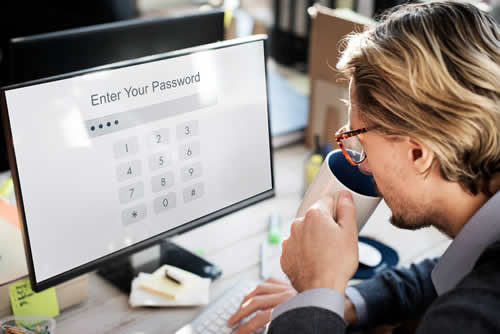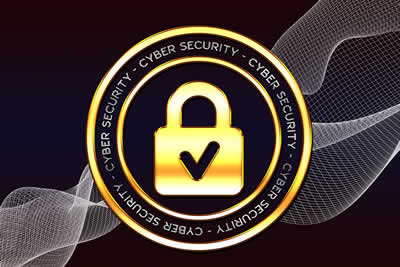Losing sensitive data on mobile devices can feel like losing your wallet in a crowded mall. It's stressful, risky, if not downright embarrassing. And as businesses become ever-more dependent on smartphones and tablets, hackers are increasingly targeting mobile devices. Keeping data safe is essential for organizations.

Studies show that nearly 70% of companies believe data breaches stem from
lapses in security for mobile devices. But don’t panic:me simple yet proven strategies you can use to keep data secure on mobile devices. So are you ready to improve your data privacy? Let’s go!
Mobile Device Management (MDM) Solutions
A whopping 14 million UK employees use a mobile phone for work - creating a tempting playground for hackers and cyber criminals. Employers who hand out digital devices have a responsibility to keep these devices - and all the important data that they contain - safe and secure. And the best way to do this is through a reliable MDM (Mobile Device Management) solution.
Remote management and monitoring
Remote management tools help IT teams to oversee and control mobile devices from a central location. They monitor the performance, compliance, and potential security issues of devices in real time.
Harmful apps or outdated software are flagged early on, which means risks are minimized without disrupting operations. Updates can usually be installed remotely, and settings can be modified on many devices at the same time. And if you want more information about how IT support can strengthen mobile security, you can
visit Nortec's official site to see how teams approach device monitoring.
Policy enforcement for security and application control
While taking care of the tech for mobile security is super-important, employers also need to back this up with a bunch of policies, rules and regulations for users. This begins with making it crystal clear to employees what they can - and can’t - access with their work phones, for example; dodgy apps and unauthorised websites. It’s also a good idea to ban downloads as this is often an open door for viruses and scammy stuff.

A business phone should be treated in exactly the same way as any other device - with measures in place to protect private or sensitive data and retain compliance through mindful sharing and transfers. Where possible, you can even give your staff a list of the apps, software and websites that are allowed to keep risks down to a minimum.
Remote wiping and locking for lost or stolen devices
If you want to prevent your staff from inadvertently wiping out your business, you need to have the ability to wipe any and all devices remotely in the event of loss or theft. With this tech, your IT army can swoop in and lock or wipe a device quickly and easily to prevent thieves and hackers from getting into the files and data that your business - and your clients - hold dear. This not only prevents headaches but can also protect your business from some pretty dire consequences if valuable data ends up in the wrong hands.
Data Encryption
Encryption is all about “disguising” data and information so that even if a hacker gets their grubby hands on it, it won’t do them any good as they won’t be able to make head nor tail of it without the magic digits needed to unlock it.
Encryption at rest and in transit
Encrypting data involves protecting it from unauthorized access. This is done by scrambling files, making them unreadable without the correct encryption keys. (A kind of “reverse translation” process.) This means that even if someone steals a device, they can’t decipher its contents … which kind of defeats the object of the theft …
At the same time, data being transferred also remains safe. Using methods like Transport Layer Security (TLS) stops it from being intercepted by hackers. Businesses looking at mobile privacy can
get started with OSG to use best practices. As one business owner put it recently, "It's not just about locking the vault; it's about tightening the pathways as well."
Protection against unauthorized data access
First things first, security begins with common sense - this means that access to data or information should be limited to a need-to-know basis to limit the chances of misuse. You’ll also want to supersize your encryption to cover devices that are out and about as well as sitting snugly on a desk in your office. Putting this stuff in place is great but you also need to employ MDM tools to constantly monitor your devices and flag up any potential problems fast.

If you'd like to learn more about what we provide, why not take a look at how we can help?
Boost your skills with our market-leading online courses at super-low prices.
Secure Network Connections
Cybercriminals
select weak networks as a top target, so you need to reduce your exposure to these threats by prioritizing safer connections.
Implementation of VPNs and secure Wi-Fi
So, picture the scene; your sales manager is in Starbucks taking a break and decides to take advantage of the shop’s Wi-Fi - what could go wrong? Quite a lot actually; public Wi-Fi is rarely secure - which means that the guy sitting behind Steve from Sales may well also be checking Steve’s emails without him knowing. A VPN (Virtual Private Network) is a really good way of locking the door on mobile data through encryption. Similarly, training staff to disable network sharing can add a deadbolt. Also, you might want to take a close look at router passwords as this can sometimes provide a way in for the baddies.
Protection against data interception on public networks
This starts with educating employees about the dangers of using public Wi-FI; whether that’s in the local coffee shop or in the pub after work as this can be a really easy way for criminals to nab passwords and sensitive info including financials. Next, you want to add another layer by introducing encryption when transmitting data - yes, we know, this all sounds a bit James Bond but it’s now a necessary part of mobile security when phones and devices are used for work. Encryption is a fantastic defence mechanism which, essentially, makes important information worthless unless you have the right password.
Strong Authentication Methods
These days, hackers are more sophisticated than N.A.S.A employees - after all, this is how they make their living. Authentication is all about adding layers of security which keep data away from those who have no business having it.

Multi-factor authentication
Multi-factor authentication includes extra security measures for mobile devices. Users have to confirm their identity using at least two different methods. This usually involves a password and a one-time code sent separately via text or email. As you would expect, this makes it a whole lot more difficult for outsiders to access private data.
One of your best bets for securing all your devices these days is through biometrics. This might sound a bit sci-fi, but it’s simply the art of using fingerprints or facial recognition to unlock devices - something that can scale up security … and even save you money on your insurance.!
Biometric and password-based security measures
For businesses that absolutely positively need to keep their data under lock and key, biometrics plus passwords is the dream team that gets the job done. When getting into a phone requires both a fingerprint and a strong password (no birth dates or pet names here), the chances of an intruder breaking in are significantly reduced.
Regular Software and Application Updates
Would you leave your front door open or let the lock get so wobbly that it’s useless ? Thought not. Just like physical maintenance, software needs to be regularly monitored and updated if you want it to remain effective.
Patching vulnerabilities in operating systems and apps
Just like a burglar will take advantage of that wobbly lock, a cyber-baddie will poke around to find weak spots in your operating systems. Managed IT Services are able to stop this from happening through preventative measures - i.e. keeping an eye on that lock and fixing it before you risk the thief running off with the family silver.

Controlling access to sensitive data through approved apps
As we touched on earlier, one really easy way of upping your security is to be more exclusive about who can access what. MDM platforms can help you to do this as well as reviewing apps and blocking unauthorised tools to help slam the door on criminals. This not only protects your business from breaches but also keeps you aligned with data governance through each and every phone or device.
Conclusion
Mobile phones are an essential part of business life - but without the proper security measures, you’re sending staff out into the world with little data bombs in their pockets. As we’ve shown in this article; by putting just a few security measures in place - and being mindful about who gets to see what - you can seriously limit the risk to your employees, their devices and to your business as a whole.





























